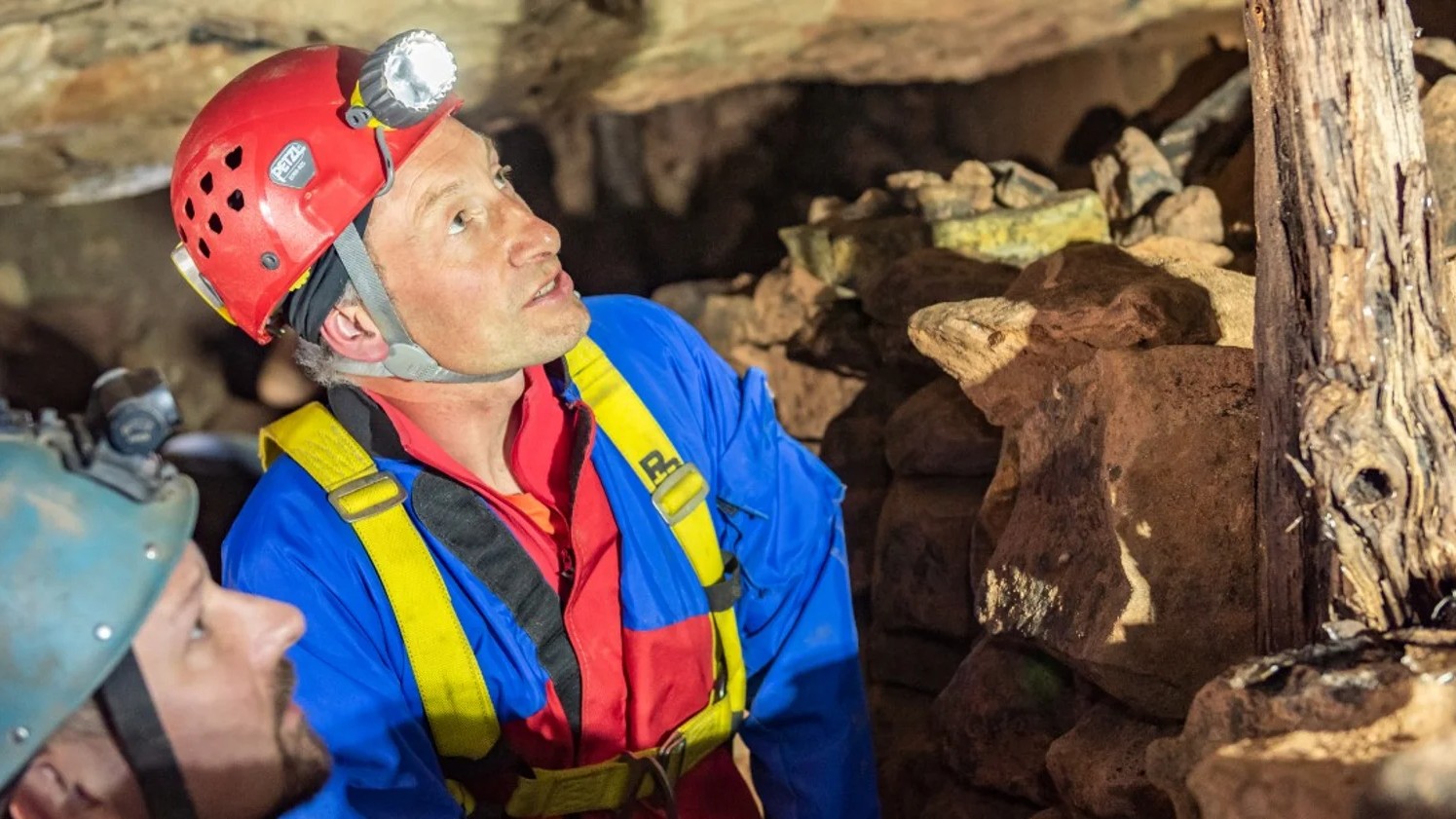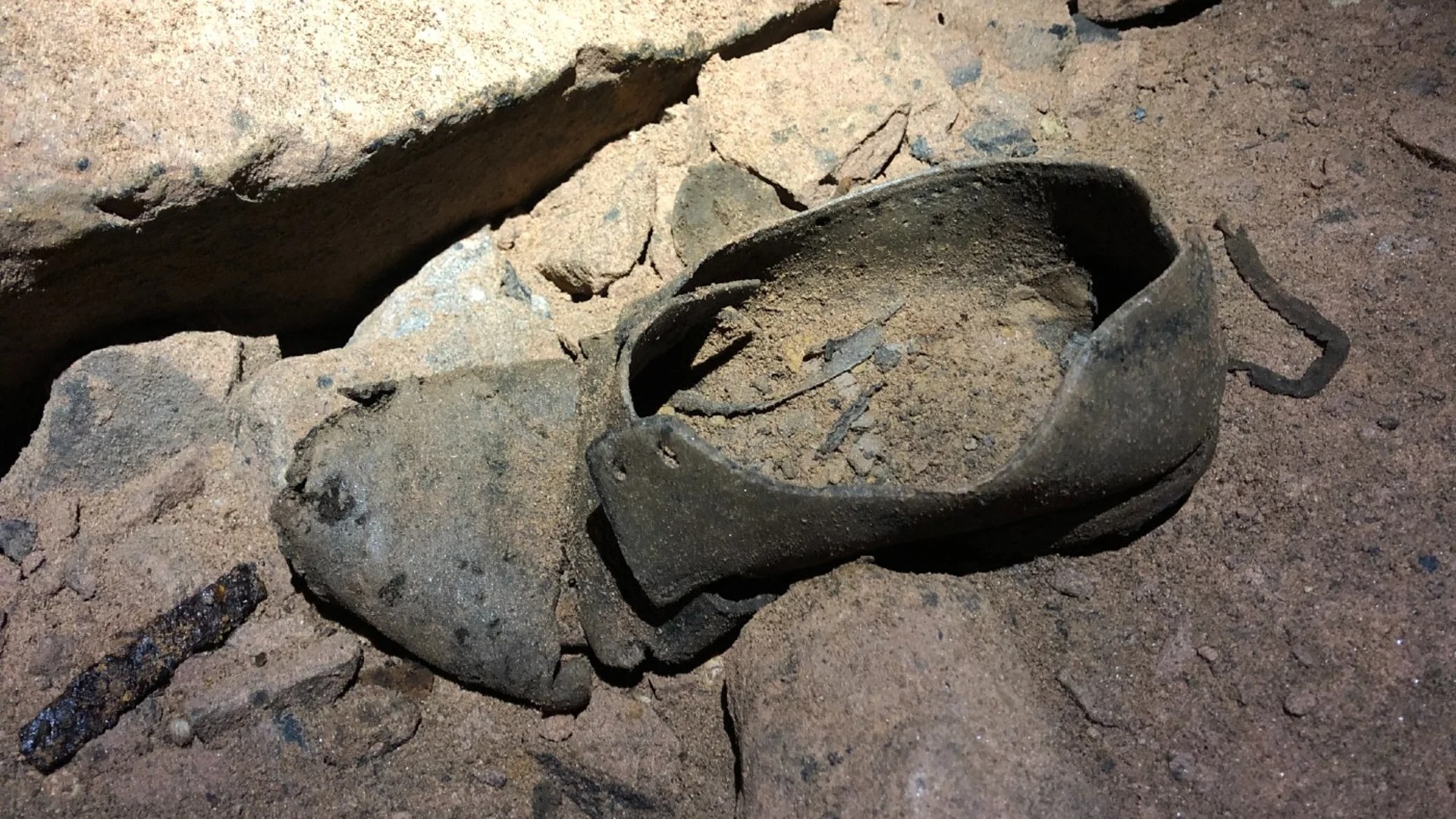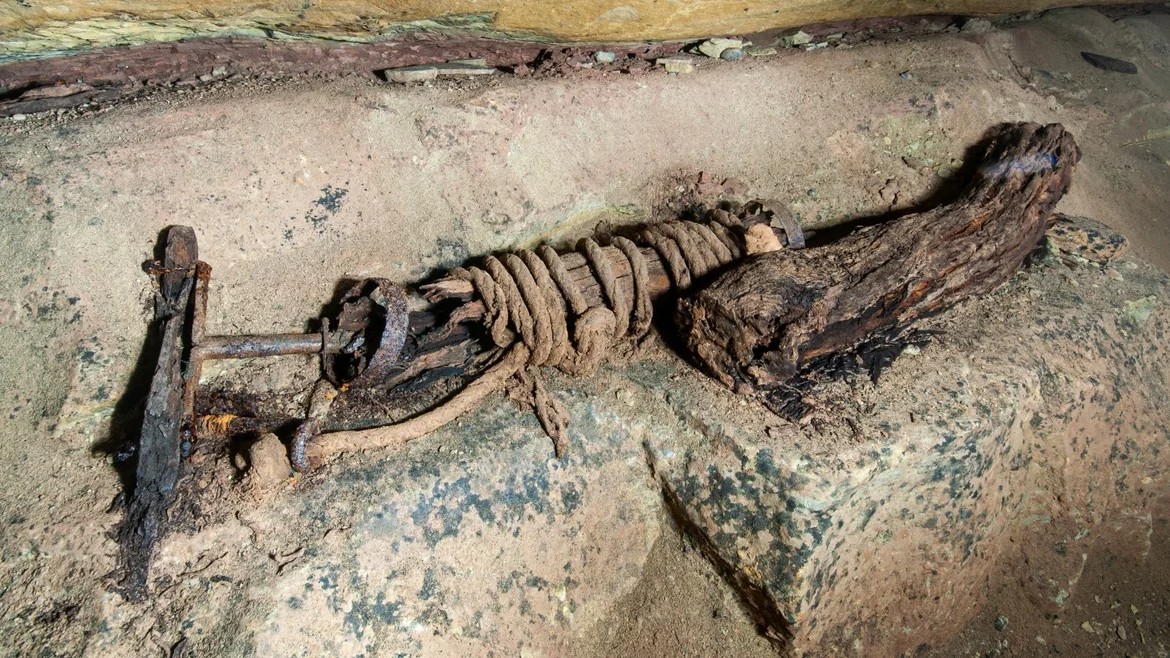Cave explorers discover a 19th-century mining scene preserved like a time capsule
Explore a centuries-old cobalt mine rediscovered by a caving club.

Leather shoes, clay pipes, a mysterious inscription written in candle soot — these are just a few of the artifacts a group of cavers recently discovered in a centuries-old cobalt mine in Cheshire, England.
The mine, located near Manchester in a village called Alderley Edge, was once a source of cobalt, an element mined for the brilliant blue pigment imbued on pottery and glass. Cobalt mining was a lucrative trade for England in the 19th century. But imports from other countries became cheaper than English cobalt, so this particular mine, owned by Sir John Thomas Stanley in the early 1800s, was abandoned around 1810.
Members of the Derbyshire Caving Club have been exploring the Alderley Edge mine since the 1970s, leasing access from National Trust, a U.K.-based conservation charity. The caving group recently stumbled upon some personal items left behind in a previously unexplored part of the mine. The discovery was like opening a time capsule.
Related: Ice age mining camp found 'frozen in time' in underwater Mexican cave

"To find a mine in pristine condition, together with such personal objects and inscriptions, is rare," Ed Coghlan, a member of the Derbyshire Caving Club, said in a statement from National Trust. "It is a compelling window into the past and to the last day when the mine workers stopped their activities."
Along with the shoes and pipes, the cavers found a bowl buried in a wall, which might be a sign of superstitious miners thanking the mine for its good ore, according to the statement. One rare finding was an instrument called a windlass, used for lifting and shifting heavy materials.
The fact that the miners left such an important tool behind makes Coghlan suspect that the miners "were told without much warning to collect their tools and move on," he said.
Sign up for the Live Science daily newsletter now
Get the world’s most fascinating discoveries delivered straight to your inbox.
One particularly mysterious finding was an inscription of the initials "WS," with the date "August 20, 1810" written below.
"Our research so far has not identified who this could be," Coghlan said. "Was it just an individual wanting to say, 'I was here,' or from a visit by a mine manager or estate owner, or could it have been to indicate the last day this mine was in use?"
The cavers found other words and numbers scratched into the mine's walls.
"We found other more basic initials and numbers in what we believe were the 'cribs' or rest areas, as if someone had been learning and practicing their writing," Coghlan said.

Now, you can tour the mine from the comfort of your home. To make the historic discovery more accessible to the public, the Derbyshire Caving Club and the National Trust teamed up with Christians Survey and Inspection Solutions, a company that uses technology to build virtual, 3D models of buildings and underground spaces.
In the Alderley Edge mine, the team used laser scanners, which shoot lasers around the environment. Those laser beams bounce back into the scanner, which calculates the distance each laser beam traveled. Doing that hundreds of times around a space produces a virtual 3D picture. The team also used remotely operated vehicles for the underwater portions of the mine, as well as other 3D imaging techniques.
"The objects found in the mine have been photographed and catalogued and left where they were found, to remain in the underground conditions which have preserved them," Jamie Lund, an archaeologist at National Trust, said in the statement. "It leaves the mine as a time capsule, protecting a place that was once a hive of activity for future generations to explore and enjoy."
Originally published on Live Science.

JoAnna Wendel is a freelance science writer living in Portland, Oregon. She mainly covers Earth and planetary science but also loves the ocean, invertebrates, lichen and moss. JoAnna's work has appeared in Eos, Smithsonian Magazine, Knowable Magazine, Popular Science and more. JoAnna is also a science cartoonist and has published comics with Gizmodo, NASA, Science News for Students and more. She graduated from the University of Oregon with a degree in general sciences because she couldn't decide on her favorite area of science. In her spare time, JoAnna likes to hike, read, paint, do crossword puzzles and hang out with her cat, Pancake.









